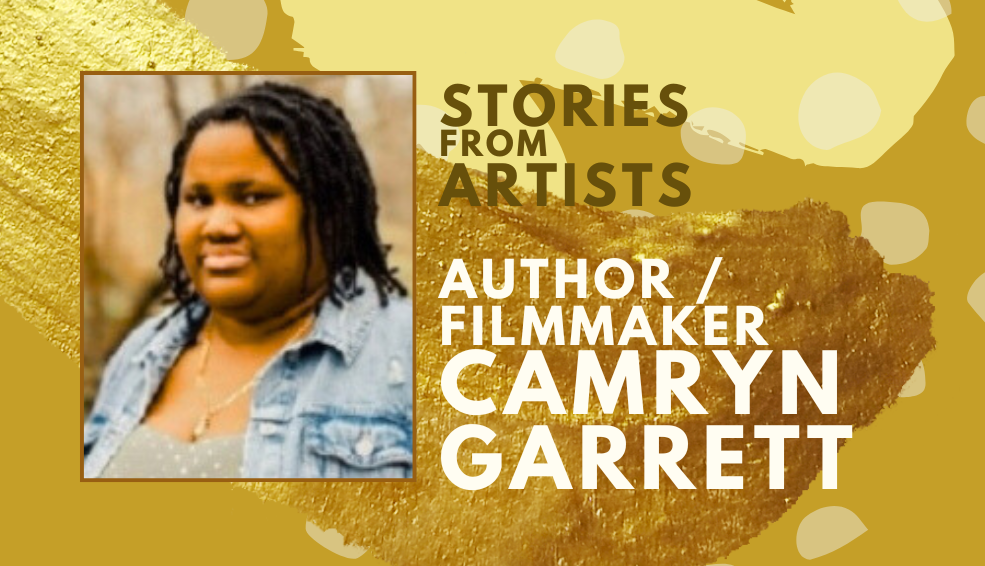
(photo by Louisa Wells)
STORIES From Artists: Camryn Garrett
For this installment in our STORIES From Artists series, we’re featuring author and filmmaker Camryn Garrett, who was named in 2019 one of Teen Vogue’s 21 Under 21 and a Glamour College Woman of the Year. Her first novel, Full Disclosure, received rave reviews from outlets such as Entertainment Weekly, the Today Show, and The Guardian, which called it a “warm, funny and thoughtfully sex-positive, an impressive debut from a writer still in her teens.” Her second novel, Off the Record received three-starred reviews. Camryn is also interested in film and recently graduated from NYU’s Tisch School of the Arts.
When is the first time you heard about HIV / AIDS?
The first time I heard about HIV/AIDS was when I was fifteen in a high school health class. We talked about Magic Johnson, but we didn’t learn anything about the AIDS Crisis or any famous people who had passed because of it or anyone who was currently living with HIV/AIDS. The message was just, “Don’t have sex or you’ll get AIDS and die.”
Why did you choose to grapple with HIV / AIDS in your work?
I read a lot about parents who were adopting kids with special needs, and I remember being so confused that people were adopting kids with HIV because I assumed they’d die pretty quickly. My mom is a nurse and educated me a bit about how medication has progressed, but I became really interested in learning about what it was like to live with HIV.
While researching this, I learned about the Crisis of the ’80s and ’90s, and was pretty shocked that it had never been covered at school. I don’t think I ever heard about it until I was 18 and in college. My friends tended to know if they were queer men, but even then, it was sometimes really vague.
I think this made it really important for me to write about these topics for a young audience. I wanted other young people like me to be aware of the history, but also the reality of the present.
In what ways have the arts adequately — or inadequately — honored the legacy of those we lost and those who fought?
I think the arts are an incredibly powerful way that we can help keep people’s memories alive and also remind people of the fight so many have gone through.
What scared you most about telling this story?
I was so scared of getting things wrong. It was more than offending people. I think I wanted this book to be a way to honor everyone we’ve lost, but also the people who are still here, and I didn’t want to let them down.
What is your favorite work of art that deals with HIV / AIDS?
120 BPM, a French movie from 2017.
What do you think the role of art is during a public health crisis?
I think the role of art is to reflect the truth, both for those who are living through the crises and those who aren’t here yet.
If you could help shine a light on one life we lost to HIV / AIDS, who would it be?
Hugh Steers, a painter who passed away in 1995. His paintings were gorgeous and explored intimacy in ways that really touch me.
This interview was conducted by Abdi Nazemian, who is a FAM Board Member and Lambda Literary Award-winning novelist.